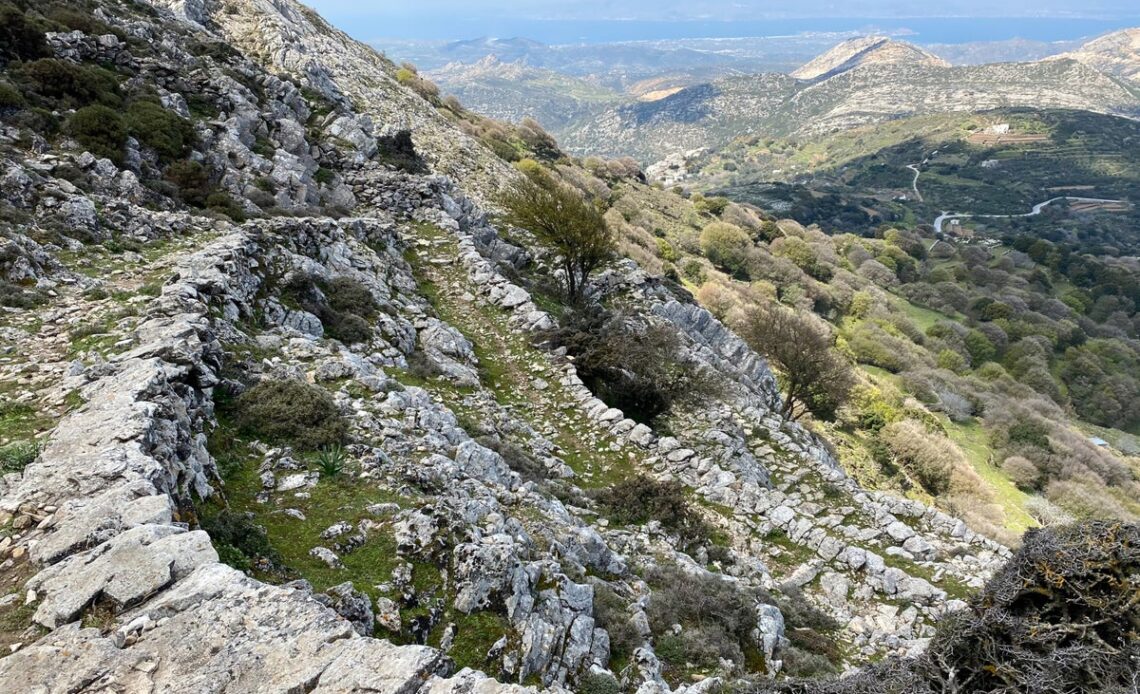“Follow mule dung and you’ll stay on track, follow goat droppings and you’ll rip yourself to shreds in the scrub,” a shepherd had advised after I got off the bus. As I navigate the rocky terrain, spikes of Jerusalem sage illuminating my way like golden candles, his words come in handy. I’m walking the Naxos Strada, a 52km trail across the Greek island of Naxos, most of it along ancient mulepaths that were once the vital veins connecting its whitewashed villages.
You’ll find mulepaths – kalderimia – on all Greek islands, but those on Naxos have the distinction of often being paved with marble. The stone has been mined here since antiquity, and still is, in quarries which glisten in the Mediterranean sun like vast slabs of feta cheese.
If the trail’s paving is classy, so is its Italianate name. ‘Strada’ reflects Naxos’ three centuries under the Venetians who dubbed its pathways communes stradas. Waymarked with posts and red paint splodges on the dry-stone walls flanking it, the Strada is maintained by a band of enthusiasts who hope it can help preserve Naxos’ precious history and biodiversity. Save Naxos from the bulldozers by walking it, they say.
(Clare Hargreaves)
Happily Naxos, the largest and most lushly fertile island of the Cyclades, still has a thriving agricultural life so is less reliant on tourism than many others. This means hikers can experience rural Greek life, whether it’s watching locals pruning their vines, listening to the tinkling of goat bells, or passing through remote mountain villages where old men still worry their beads over shots of fiery raki and nibbles of octopus.
At a leisurely pace, the Strada takes five days. You could find lodgings along the way, but Naxos main town, known simply as Hora (Town), with its maze of whitewashed sugar-cube houses clustered around a fortified Venetian castle, is so enchanting that using it as a base seems a no brainer. Unlike many other Greek islands, Naxos is large enough to have buses which can take you to the start of each leg. Provided you don’t mind giggles and gum, the 7.30am school bus is a godsend.
Read more on Greece travel:
I begin my trek at the endearingly named Saint Mamas, a 10th-century basilica standing solitary among the olives. It’s one of thousands of churches and chapels that are scattered across the island like snowflakes,…
Click Here to Read the Full Original Article at The Independent Travel…
